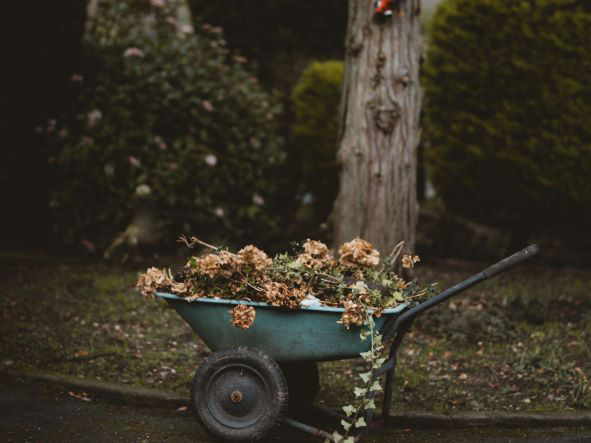What does it look like to prevent weeds PROACTIVELY on hard surfaces?
When most people think of alternative weed control methods, they think of reactive approaches, such as foam, hot water, vinegar, burning, and Strimming. We must be more proactive!
Hard surfaces are chosen for their inherent properties, which allow for supporting traffic, easy access, drainage of rainwater, crisp appearance and many other important functional benefits.
Why are weeds a problem? - Well in some ways they aren't really the problem except aesthetically. However, weeds grow in soil, not in hard materials such as rock, brick, tarmac etc. Soil on hard surfaces is a major problem for several reasons and results in weeds that can cause further complications.
- Soil finds all the cracks in the surface when it is blown there or compacted into gaps by traffic. When it rains the soil retains the water instead of allowing it to drain away. Not only can this cause drainage problems. In winter this water will freeze, expanding the cracks in a freeze/ thaw cycle that will further damage the surface.
- Soil blocks up the drainage channels on a hard surface. Soil usually builds up when it gets trapped by a vertical surface, first appearing in gaps between blocks, kerb edges and along walls. This is also where water is normally channelled away. Blocking of these channels leads to flooding of the surface.
- Soil provides a nutrient rich bed for weeds. Different depths of soil promote the growth of different types of weeds. from mosses and small annual weeds in very shallow soil, to perennial plants with tap roots in slightly deeper soil and woody plants in even deeper soil. The deeper the soil is allowed to get, the more damage the resulting weeds will do to the hard surface underneath with their root systems.
If we can keep soil at bay, we can keep the surface performing well and limit the weeds that grow there.
So how can we minimise the soil?
- Keep trees and hedges trimmed. - Trees drop masses of organic debris every year, which decomposes and causes much of the soil that emerges on a hard surface. Keeping a trees canopy to a reasonable size and removing dead branches will greatly reduce the volume of material dropped onto hard surfaces near the trees. This is the first step in reducing the soil at source.
- Fill gaps in surfaces to reduce the traps for detritus and soil. Reducing the size of any traps will minimise the effects of freeze thawing and prevent deep pockets of soil where perennial weeds can easily become established. This will allow your surface to perform its duties weed free for much longer.
- Sweep away detritus. Once you have minimised the source of detritus and minimised its entrapment points it becomes less burdensome to remove. We can now sweep the organic material from the top. Ideally this is done at convenient points in the year to prevent allowing sufficient time for detritus to decompose into soil, at which point it becomes more time consuming to remove.
- Remove the existing soil from the hard surface, This can be done efficiently with a weed brush, but could also be managed with a shovel and broom or in some cases a pressure washer.

As discussed; keeping soil to a minimum restricts the types of weeds that grow to annual plants and mosses. These annual plants and mosses can be removed effectively with a weed brush or controlled by heat with only one or two treatments per year.
Trying to kill the weed only (without minimising the soil) will only lead to more organic material on the ground, which will become deeper soil, allowing more perennial weeds to emerge over time that will be more and more difficult to deal with requiring many treatments per year.
A true cost comparison of weed control methods should take surface performance into account. After all, the whole point is not to turn weeds brown, but to keep the surface performing well - supporting traffic, draining, allowing easy access and looking good. A better maintained surface requires far less interference to directly control weeds.
Kersten sweepers and weed brushes are great at maintaining hard surfaces by removing detritus and debris which reduces weed growth and is fundamental to Integrated weed management.
More information on Kersten Weed Brushes can be found on the Mechanical Weed Removal Page.
Contact Kersten to chat about your requirements.
No comments yet. Login to start a new discussion Start a new discussion